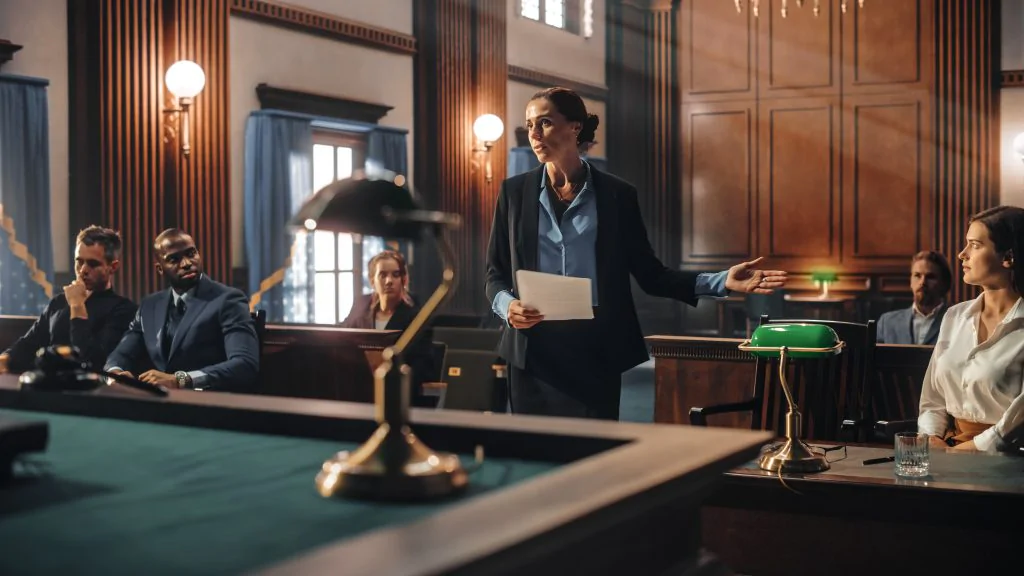Head-on collisions are terrifying. For good reason. They are among the deadliest types of car accidents in the U.S. These accidents tend to combine higher speeds with full impact—not a sideswipe that has a chance to deflect off a car, but a complete frontal assault. That’s why even though New York State’s motor vehicle traffic deaths decreased 6.3 percent in 2017-18 from 1,006 to 943, the very idea of a head-on impact is haunting.
Head-On Collisions in New York: State Statistics
Head-on impacts placed second for causing the most fatal crashes among moving vehicles in 2017, reports the National Highway Traffic Safety Administration (NHTSA). Head-on accidents represented about 10 percent or 3,471 of the 13,416 fatal impacts with moving cars in that year. Nearly twice as many fatal accidents—18.6 percent or 6,354—were the angle variety, and sideswipes accounted for 2.8 percent of fatalities, or 961.
Although fatal accidents across the country were on the decline in 2018, that was not the case for those involving large trucks, which saw a 31-percent increase in the number of people who died ten years earlier, in 2009, when stats were at an historically low point.
Frontal crashes are also more prevalent in rural areas, making up 13 percent of all fatal vehicle accidents there. That’s almost double the head-on deaths in urban areas, where they amount to less than 7 percent, according to NHTSA’s National Center for Statistics and Analysis. Clearly, speed in rural areas as opposed to urban ones plays a significant role in the fatality rate of head-on collisions in different settings.
Most Common Causes of Head-on Collisions & How to Avoid Them
Highway accidents caused by frozen road surfaces may make scary news footage but bad weather, vehicle malfunctions, and other non-human factors account for only 6 percent of all crashes. When it comes to the cause of a head-on accident, human behavior stands out.
Falling asleep at the wheel, distracted driving, or excessive speed at a curve are three common reasons for the potentially deadliest of all accidents—the head-on impact. But drunken driving, unsafe passing, road obstacles (like swerving to miss a deer), and confusion (entering the highway the wrong way) also can lead to this type of disaster.
The good news is that you can take action to save your life when headlights are coming straight at you. On Overdrive.com, professional driver Don Cuddeback tells how he was able to stay calm, slow down—which in a big rig isn’t easy—and take evasive action when he saw lights lined up with his truck on a narrow road near his Tennessee home. He expected the motorist to return to his lane but soon realized that wasn’t going to happen, and thought, “I’m going to buy this one.” Yet a calm head prevailed, as it can for any prepared driver.
Like Cuddeback, you’ll want to slow down by easing off the gas and pressing the brake pedal; the key is not to lose control, which may be a little challenging on an interstate. Making it a habit to drive the speed limit will boost both reaction time and shorten braking distance.
While slowing down for evasive action, blow the horn and flash the lights to get the other driver’s attention. If the driver comes to and realizes his mistake, his instinct will be to swing back over to his lane. For that reason, it’s never smart to swerve to the left to avoid oncoming vehicles.
Also, resist the tendency to overreact and over steer which can cause you to run off the road and crash. Instead drive onto a clear area like the shoulder or, if necessary, off the road once you’ve slowed to a safe speed.
Best Driving Practices to Avoid Head-On Accidents
Here are some other safety pointers aimed at preventing head-on tragedy:
- Make it a practice to drive in the center of your lane where you’re less likely to meet up with a wayward vehicle.
- No need to wait until the last minute to sense trouble; scan the road ahead to anticipate possible hazards.
- No matter how pressed for time you may be, take care not to cause a head-on collision when passing. Only turn when a safe distance from oncoming traffic.
- Before hitting the road, increase your survival chances by buckling up, driving only when alert and sober.
- Avoid risky road conditions like snow and ice when possible and slow down in them when you have to drive.
What Kinds of Injuries Are Covered in Head-on Collision Lawsuits?
Unless one driver successfully takes evasive action, as mentioned above, head-on accidents often combine speed and force to cause serious injury—the kind that may have you considering legal action to cover medical expenses, disability, loss of income, and more.
Specifically, you may wonder about the types of head-on-crash injuries a lawsuit is most likely to address. The most common injuries covered are those involving the head, spine, chest, hip, pelvis, and lower extremities. These are all traumas the NHTSA ties to frontal accidents on its website.
When a head-on collision causes a blow to the head, one of several types of traumatic brain injury (TBI) is likely. The most common is the concussion, but there are others that have the potential to change life dramatically.
Motor vehicle accidents are also a leading cause of spinal cord injuries, accounting for half of all new cases annually, according to the Mayo Clinic. Changes in strength, sensation, and other body functions below the site of injury all can result from damage to the vertebrae, ligaments, or disks of the spinal column or the spinal cord itself.
Disabling lower extremity injuries can be a serious concern with a high-energy crash like a frontal collision. With the seatbelt and airbag use on the rise over the last decade, more occupants are surviving high-energy accidents that previously resulted in severe head, thoracic, and abdominal injuries, according to the NHTSA. But they are not escaping leg and foot injuries. At least 20 percent of those admitted to trauma centers after a crash suffered one or more lower-extremity fractures. Foot and ankle injuries represented 8-12 percent of all moderate to serious injuries sustained in head-on crashes.
With the potential for head-on accidents to create debilitating injuries, suffering from such harm should result in a call to an attorney. It’s important to make sure you are cared for if trauma leads to permanent disability. One of the things a lawyer can help with is deciphering who is at fault for the accident.
Who is Responsible in a Head-On Collision?
Determining the whodunit in a head-on collision requires piecing together all kinds of clues. The forceful impact may have flung vehicles across the highway making it difficult to imagine the epicenter of the disaster.
NHTSA reports certain driver behaviors are common factors in fatal crashes with speeding at the top of the list for motorists (almost 17 percent or 8,596 of fatal accident drivers in 2018). Another 10 percent or 5,175 drivers in 2018 fatal accidents were impaired by drugs, alcohol, or medication. And the list goes on with failure to stay in the proper lane and failure to yield the right-of-way as third and fourth, followed by distracted driving as fifth. Obviously, it takes a trained eye to explore all these possibilities.
Fortunately, the New York State Police Department has its 50+ member Collision Reconstruction Unit trained in collecting evidence, looking for clues like tire marks and pavement scarring, and piecing together the puzzle of what happened in serious accidents. CRU members have a variety of tools at their disposal– everything from digital cameras to staged collisions—which they use to forensically map scenes based on speed calculations, toxicology results, interviews, and more. Their testimony in criminal and civil courts of law is considered expert as they are trained to get to the bottom of how collisions occurred and who should be held responsible.
Accident investigators like CRU can play a big part in establishing fault after a head-on crash, but it should be noted that they don’t need to squarely blame the other driver for you to collect insurance money to pay medical bills and other related damages. New York motorists are required to carry no fault liability insurance which covers medical expenses regardless of who is at fault, with certain exceptions like drunken driving.
Yet there is a dollar limit on mandatory insurance coverage in New York State ($25,000/$50,000 for injury) and so your options may seem narrowed by coverage. Of course, even those minimum amounts aren’t guaranteed a victim. Depending on the extent of your injuries, pain, and suffering, you may decide to work with an attorney to negotiate with insurance companies and, if necessary, take your case to court. You’ll need to prove the other driver acted with negligence, but there is no cap on dollar awards in New York so a knowledgeable personal injury attorney could make it well worth the effort.
Contact a Head-On Collision Lawyer in New York
If you or a loved one suffered injuries in a head-on collision, you may be eligible for compensation to cover related damages. The car accident attorneys at Sobo & Sobo have over 50 years of experience helping clients gain compensation to help cover medical costs, lost wages, and other damages for pain and suffering. Call 855-468-7626 today for a free consultation with an expert lawyer in New York.




